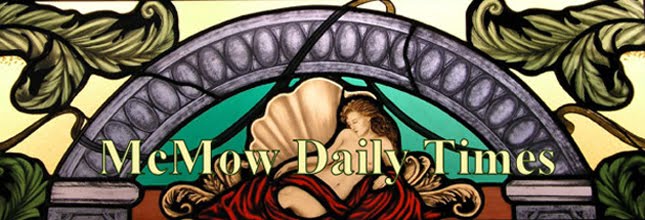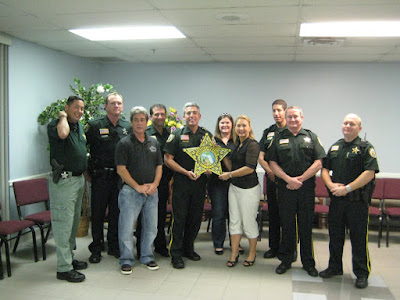
Meet Hans.
Hans is a Master Craftsman trained in Germany. When asked what it means to be
Dreamweaver at McMow Art Glass, Hans gives a demonstration of the technique called "weaving" that is fundamental to the best quality stained glass construction.

Here Hans shows us two pieces of cut and assembled leaded glass. They look pretty much the same when viewed from the front - until you look a little closer.

Here are the same two piece held vertically as they would be installed. Notice the instability in the piece on the left. It bends.

Here's a close up of the unstable piece. Notice the warping in the lead around the edge. The same flexibility and malleability that makes lead the perfect material to join stained glass is also the quality that can make a poorly crafted piece so unstable it may not survive it's own weight when hung.

Here is the reverse side of the inferior piece. Notice the gaps in the lead. Several long pieces are stacked horizontally with short cross pieces stacked vertically. This severely compromises the vertical integrity of the whole piece. Notice too how the light is distorted from piece to piece.

This is a close up of the same piece from the front. Hans is pointing to a solder that has been so compromised it has failed and pulled away from the glass. We can see other joinings that have also broken free. This is what can happen when a poorly crafted piece is exposed to the elements, like wind, rain, heat and cold.

When a piece is carefully and expertly crafted using the technique called "weaving", the window holds it's shape and the design is protected from the weather, warping and distortion. This technique was used for centuries in the cathedrals of Europe long before it became standard practice to shield stained glass art windows with protective high tech glass.

Here on the reverse side of the quality crafted piece, we see the secret to that craftmanship revealed. Notice how the lead is carefully woven into the whole frame of the piece. A long piece is crossed by a short piece both horizontally and vertically - each one strategically alternated to provide a solid stable frame for the individual pieces and the piece as a whole.

Here's another close up showing how all the pieces in this simple design are joined together in a solid unified pane making this a lasting treasure. See too how the light reflects evenly across the whole design.

This is a close up of the front of the quality crafted piece. Notice the solders are unbroken and even with no gaps or pulling away from the glass.
So that's the story from Hans on what Dreamweavers means to him. Come back to McMow Daily Times soon and often for more Dreamweaver stories.
















































